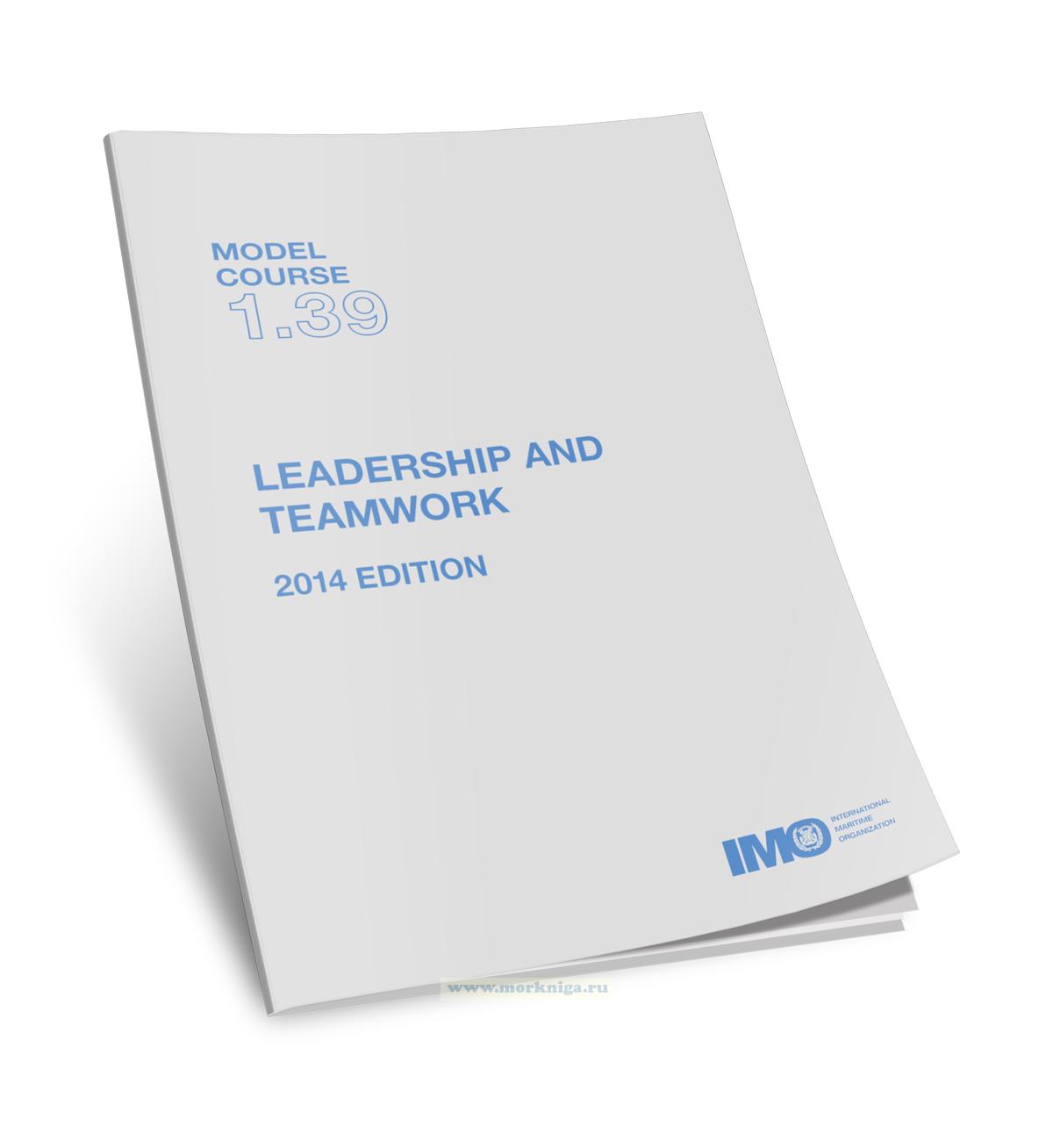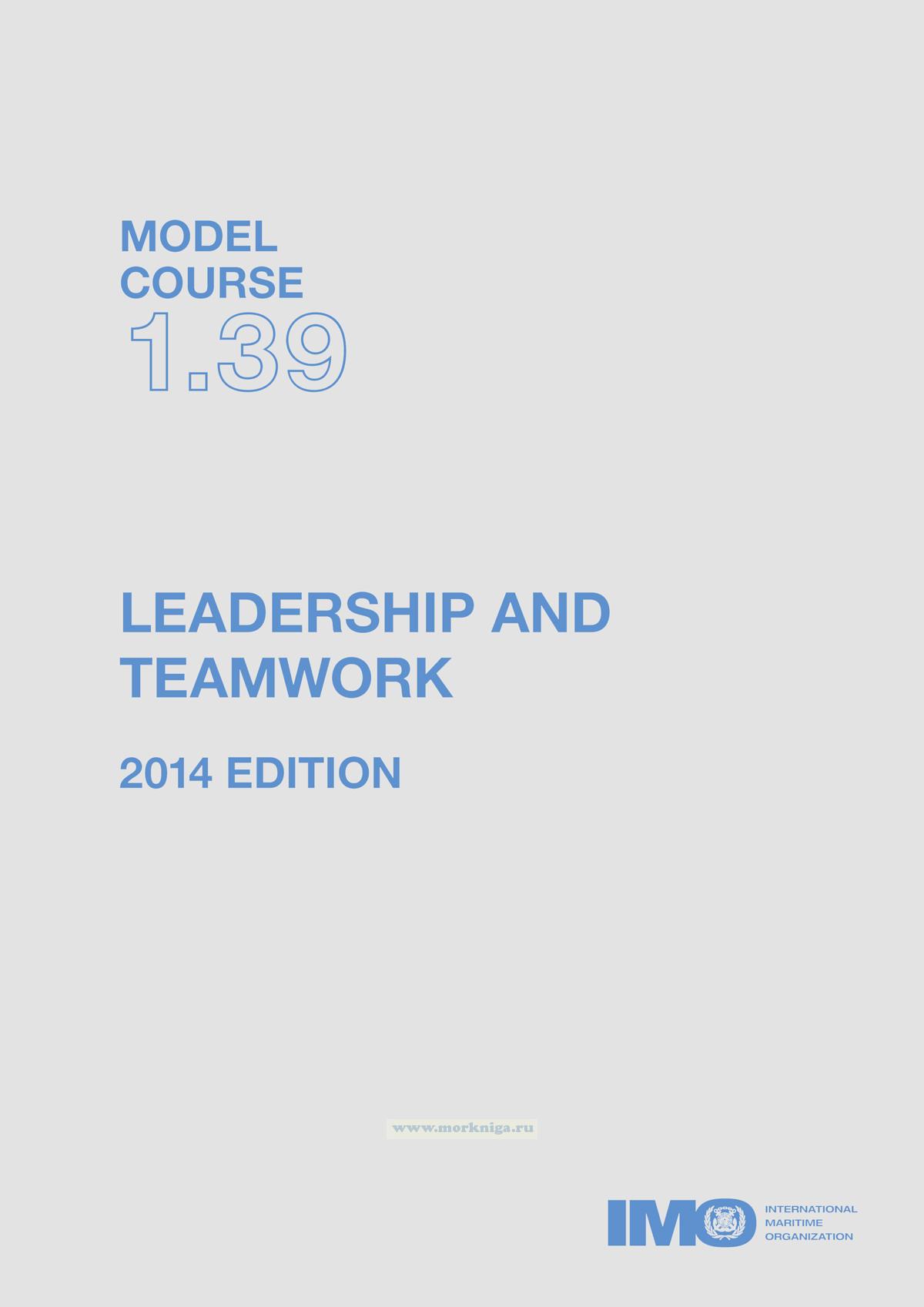Leadership and Teamwork. Model Course 1.39. 2014 Edition
Книга на английском языке.
Following the adoption of the International Convention on Standards of Training, Certification and Watchkeeping for Seafarers, 1978 (STCW) , a number of IMO Member Governments had suggested that IMO should develop model training courses to assist in the implementation of the Convention and in achieving a more rapid transfer of information and skills regarding new developments in maritime technology. IMO training advisers and consultants also subsequently determined from their visits to training establishments in developing countries that the provision of model courses could help instructors improve the quality of their existing courses and enhance their implementation of the associated Conference and IMO Assembly resolutions.
In addition, it was appreciated that a comprehensive set of short model courses in various fields of maritime training would supplement the instruction provided by maritime academies and allow administrators and technical specialists already employed in maritime administrations, ports and shipping companies to improve their knowledge and skills in certain specialized fields. With the generous assistance of the Government of Norway, IMO developed model courses in response to these generally identified needs and now keeps them updated through a regular revision process taking into account any amendments to the requirements prescribed in IMO instruments and any technological developments in the field.
These model courses may be used by any training institution and, when the requisite financing is available, the Organization is prepared to assist developing countries in implementing any course.
Contents
Foreword
Introduction
Purpose of the model courses
Use of the model course
Lesson plans
Presentation
Implementation
Competency based training and assessment
Part A: Course Framework
Scope
Objective
Entry standards
Course certificate, diploma or document
Course delivery
Course intake limitations
Staff requirements
Teaching facilities and equipment
Teaching aids
Bibliography (B)
Electronic media (E)
IMO references (R)
Part B: Course Outline and Timetable
Course Outline
Course Timetable
Part C: Detailed Teaching Programme
Learning objectives
References and teaching aids
Instructor manual
Part D: Instructor Manual
Introduction
Guidelines for the Instructor
1. Introduction
2. Working knowledge of shipboard personnel management and training
3. Knowledge of international maritime conventions, recommendations and national legislation (emphasis to be on human factors, not on technical factors)
4. Ability to apply task and workload management
5. Knowledge and ability to apply effective resource management
6. Knowledge and ability to apply decision making techniques
7. Closing
8. Timetable
Annex 1. Leadership styles
Definition of leadership
Popular leadership styles - a glossary
1. Autocratic leadership
2. Bureaucratic leadership
3. Charismatic leadership
4. Democratic or participative leadership
5. Laissez-faire leadership
6. Task-oriented leadership
7. People-oriented or relations-oriented leadership
8. Transactional leadership
9. Transformational leadership
10. Servant leadership
Key points
Annex 2. Sample lesson plans
Example 1 - Human error
Example 2 - Fatigue
Example 3 - Communication
Part E: Assessment and Evaluation
Comment on STCW Code Part А Criteria for evaluating competence
Comment on STCW Code Part B Recommended Guidance regarding the provisions of the STCW Convention and its annex: Evaluation of competence
Appendix 1
Application of leadership and teamworking skills provisions for controlling the operation of the ship and care for persons onboard at the operational level, and at the management level. STCW Convention, 1978, as amended, tables A-II/1, A-III/1 and A-III/6
Appendix 2
Guidelines on dealing with management level issues that arise during the course for operational level seafarers
Guidance on the implementation of model courses

